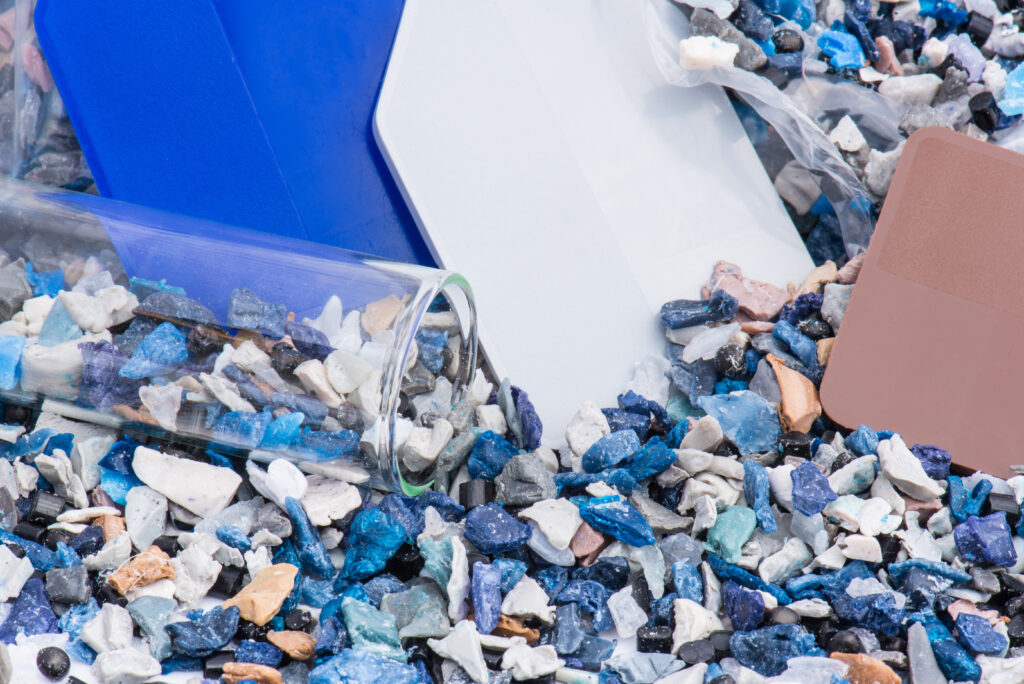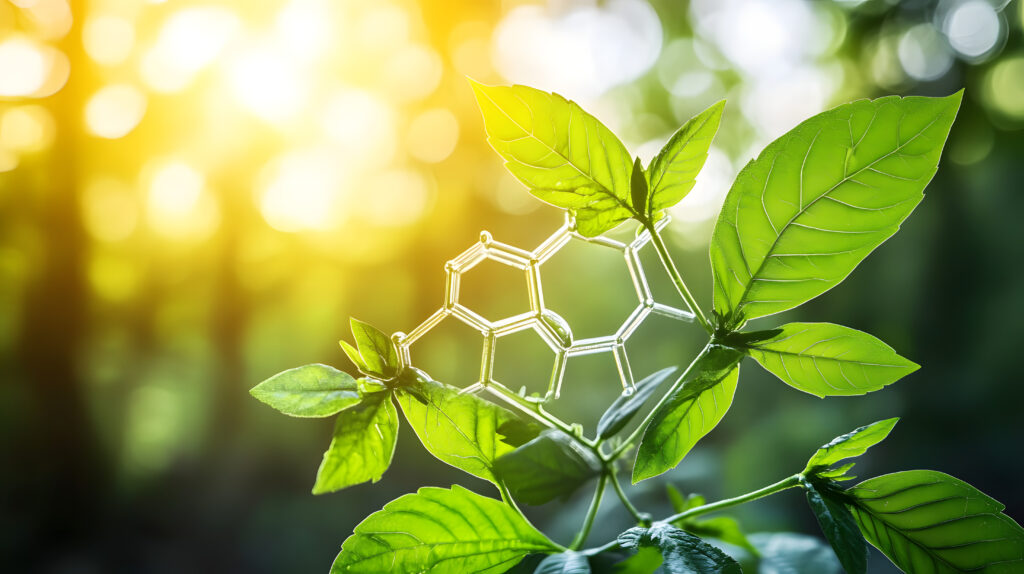Environmental Sustainability
Polymers are used in finished consumer products and durable goods, such as cell phone casings and automotive body parts, as well as single-use disposable products such as product packaging or food containers. The prevalence of polymeric materials in products requires consideration of the environmental impact of these materials, as well as the challenges in extracting and reusing these materials. Increasing public and regulatory scrutiny of polymeric materials in waste stream is resulting in manufacturers considering how they use polymers in their products, and how they can design for simpler recycling.
Circular Economy
The phrase ‘circular economy’ is a concept aimed at reducing the adverse effects materials have on our environment and society by considering how to reduce material use, have manufacturing processes that are less resource intensive, and reduce end of life waste. This concept requires a detailed knowledge of material science, manufacturing processes, and regulatory environments, with extensive overlap with product requirements.
The circular economy model makes use of sustainable and renewable materials, recycling of materials, re-use of devices, sourcing non-petroleum based polymers, reducing single-use products, considering alternative manufacturing processes to reduce scrap, and using degradable materials. Manufacturers are increasingly including circular economic considerations in designing new products and manufacturing facilities as consumers become more aware of the liabilities of materials in our waste streams.
Sustainable & Renewable Materials
Part of the circular economy concept involves source materials that are sustainable, which are materials that are sourced with low environmental impact, have a longer lifecycle, degrade into harmless products at the end of life, or are from renewable sources.
Biomass based polymer synthesis (from plant stock, or recycled food oil) can generate thermoplastics that were traditionally made from petroleum and are hence a renewable source of feedstock. Designs that incorporate products that are easier to recycle (fewer types of polymers, more incorporation of degradable products such as cellulose) are part of the sustainable model.
Plastic Regrind
Plastic regrind is usually scrap plastic captured from the manufacturing process. For example, molding processes that result in flashing, tailing, or short-shots generate plastic waste at the manufacturing facility. Rather than dispose of these materials in landfills, manufacturers will put these materials back into the manufacturing process so that the products contain a percentage of post-industrial regrind (PIR).
Because the regrind has been exposed to different thermal and mechanical processes compared to virgin polymers, the manufacturer should perform testing to ensure that final products containing the regrind material behave as intended.
Post-consumer regrind (PCR) is based on polymer resin recovered from the recycling waste stream and then reprocessed into new consumer goods. Plastic lumber is often made from PCR and has shown good durability in outside environments.
PFAS
Perfluoroalkyl substances (PFAS) are fluorinated compounds of varying structures that are commonly used in manufacturing polymer materials or are actually present in some devices. PFAS compounds benefit from having very good lubricity and chemical inertness, features that help with processing polymeric materials. However, these properties result in PFAS compounds accumulating in the environment, as the carbon-fluorine bond on PFAS compounds is resistant to degradation processes seen in other carbon-based compounds.
While extensive research is on-going to assess the health effects of PFAS compounds in the environment, manufacturers are already considering alternative options in anticipation of a changing regulatory environment. Part of this change involves assessing and reducing residual PFAS in manufacturing environments that previously employed them.
Microplastics
Microplastics, particles of plastic that are less than approximately 10 micrometers in size, are usually the result of environmental breakdown of polymeric materials found in the waste stream, although some microplastics were part of the original product, such as microbeads in toothpaste and other abrasives. Recent research in microplastics, including some performed at Cambridge Polymer Group, has shown the prevalence of microplastics in soil, water, and living tissue.
While the clinical effect of microplastics is currently still being debated, the presence of these materials, estimated by some to be about 100,000 tons in the upper 3 meters of the earth’s oceans, has cast harsh light on the use and disposal of single-use plastic devices and considerations for increased recycling efforts.
Degradable/Compostable Polymers
Plastic use in packaging has provided improvements in food preservation, reductions in shipping costs due to weight reduction, and marketing benefits with transparent or targeted packaging options. Limited use products intended for disposal after a short period of time, such as toothbrushes, can be manufactured more inexpensively with polymers compared to other more sustainable options such as plant-based products or metals.
There is a growing push to minimize plastic waste, prompting manufacturers to explore degradable polymeric materials. A small but growing list of polymers are available that will undergo safe degradation (e.g. reducing the polymer to products that pose low environmental risks) in composting waste streams. Proper selection of these materials, taking into consideration the intended end use, can ensure satisfied customers and provide them with assurance of good environmental stewardship.
How CPG Can Help
Implementing circular economy practices for polymers requires expertise in materials science, manufacturing processes, product design, and regulatory compliance. Cambridge Polymer Group works with your design and manufacturing team to outline the steps and considerations for product optimization, cost efficiency, and risk minimization. By taking a materials-informed approach, manufacturers can reduce environmental impacts while meeting performance and cost targets.



